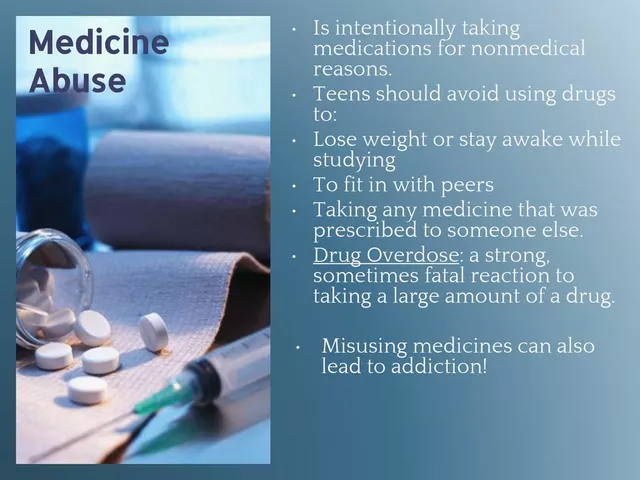Picture this: a little white pill that can quiet raging thoughts or make it possible for someone to communicate clearly again after weeks of confusion. It sounds like magic, but it's actually modern psychiatry at work—and that pill is often Risperdal. Stories about antipsychotic meds have been around for decades, but few names come up as often as risperidone, known commercially as Risperdal. It’s a medication that’s sparked controversy, lawsuits, hope, dread—and for many, a shot at a more stable life. Even people who don’t take it have probably heard whispers about it somewhere. Are the benefits worth the risks? Who should actually take Risperdal? Is that long list of side effects as scary in reality as it looks on the paper you get with your prescription bag? Let’s give the rumors a rest and break down what Risperdal really does, how it works, and how to navigate the journey if you're one of the millions handed this script each year.
What is Risperdal and How Does It Work?
Risperdal isn’t your average over-the-counter headache fix. Its scientific name, risperidone, tells just part of the story. First approved by the FDA in 1993, Risperdal was a game changer for people living with serious mental health conditions like schizophrenia, bipolar disorder, and irritability linked to autism. So how does it work? In short, it tweaks the signals in your brain—specifically, it affects the flow of dopamine and serotonin. These are the chemical messengers that tell your brain how to think, feel, and act. People with schizophrenia, for example, often have an overload of dopamine. Risperdal helps balance that out. Sounds simple enough, but the way it does this is still being unpacked years later. The medication blocks certain receptors—picture tiny locks in your brain cells—and keeps dopamine from flooding your system. In bipolar disorder, it helps calm manic episodes, and, for some kids with autism, it can reduce serious irritability or self-injury.
Doctors sometimes use Risperdal for off-label reasons, too—like severe depression that hasn’t budged with anything else, or symptoms linked to PTSD and anxiety. But the big three conditions are where it’s most often prescribed. Pills come in various strengths, and there’s even a long-acting injectable option for people who have trouble remembering daily meds. The goal: fewer relapses, more stability. Medication like this isn’t a cure, but it’s often the lifeline that lets therapy, relationships, and everyday life actually work again.
What makes Risperdal unique among antipsychotics is its 'atypical' status. Decades ago, older drugs (called 'typical' antipsychotics) calmed psychosis, but with nasty side effects like extreme muscle stiffness and restlessness. Risperdal and similar drugs caused fewer of those old-school problems and were considered much safer by comparison. But, as thousands of people learned, side effects still lurk—and for some, they’re just as worrying as the conditions the drug treats. Talk about a tradeoff, right?
Who Gets Prescribed Risperdal and Why?
Think Risperdal is just for adults locked in psychiatric hospitals? Not even close. Sure, schizophrenia—the classic diagnosis for antipsychotics—usually starts in early adulthood. If someone’s hallucinations or paranoia make life unbearable or dangerous, a doctor might reach for Risperdal. But it doesn’t stop there. Kids as young as five have been approved to use it, mostly for irritability tied to autistic spectrum disorder. There’s also a long-running debate around its use in dementia patients who become aggressive or agitated. While it’s not strictly approved for this, some doctors use it off-label, especially in nursing homes. But the risks go up in older adults, and the FDA has warned about a higher risk of stroke and death for elderly dementia patients on antipsychotics. That’s why good doctors don’t hand this out without thinking through every option first.
Bipolar disorder is another big reason for a Risperdal prescription. The mood swings in bipolar can go beyond feeling up or down—they can be truly wild. Someone in a manic episode might quit their job on a whim or race through days without sleep, convinced everything is amazing. Risperdal can help bring that high down to a safer, more manageable level. As for depression, sometimes doctors add risperidone when traditional antidepressants just aren’t cutting it, hoping the combination will finally push symptoms into remission.
So, who shouldn’t take Risperdal? Anyone with known allergies to risperidone or similar meds, obviously. But it gets more complicated if someone has heart problems, diabetes, Parkinson's disease, or certain movement disorders. The biggest rule: don’t start or stop Risperdal without talking to your doctor. It sounds basic, but too many people either tough out side effects alone or quit cold turkey, both of which can backfire hard.

Side Effects: What To Expect, When To Worry
The real clincher for anyone considering Risperdal is the side effects list. The moment you pick up your first prescription, that folded white pharmacy printout lists everything from weight gain to muscle twitches to possible hormone changes. It’s enough to scare off even the bravest. So, what’s likely, and what’s just a ‘rare-but-possible’ risk?
The most common side effects are sleepiness, dizziness, increased appetite (hello, midnight snacks and tight pants), and a dry mouth. A lot of people see some weight gain—up to 20 pounds, according to research published by the American Journal of Psychiatry. Not everyone packs on the pounds, but if you’ve struggled with weight before, it can be super frustrating. Other possible problems: hormonal changes that can lead to breast enlargement or milk production (even in men or kids). This is called hyperprolactinemia, and while it can be embarrassing or weird, it’s usually reversible if you stop or change the medicine. Some people notice movement issues: twitches, stiffness, or a restless urge to move. Doctors watch closely for something called tardive dyskinesia—a weird and sometimes permanent movement disorder. That’s part of why regular check-ups matter so much with this med.
Let’s talk about rare, but real, risks. Risperdal can mess with your blood sugar, raising the chance of diabetes, especially in people who already have some risk. It can also raise cholesterol, mess with your heart rhythms (long QT syndrome), or lead to sudden drops in blood pressure. For elderly patients with dementia, the FDA says there’s a higher risk of serious complications, even death. Scarier side effects like neuroleptic malignant syndrome—the so-called ‘antipsychotic storm’ with a dangerous fever and muscle breakdown—are very rare, but you don’t want to ignore symptoms like sudden confusion, muscle stiffness, or heat you can’t explain. Those call for fast medical help.
If you need a quick tip: stay in touch with your doctor early and often. If something feels off or you’re freaked out by a physical or mental change, say something. Lots of issues can be managed by tweaking your dose, changing when you take it, or switching meds. Waiting too long turns small problems into big ones.
Survival Tips for Living On Risperdal
So you’ve filled your prescription and the bottle is sitting on your nightstand. Now what? Here’s where the day-to-day reality sets in. No one hands you an owner’s manual on how to make life on antipsychotics easier. But the stories from real people who’ve been on this med for years are full of helpful nuggets.
- Track your side effects early. Most people feel drowsy the first week or two, especially if they take it at night. Set alarms, ask family or friends to keep tabs, and use notes or an app to notice patterns.
- Eat mindfully, not just “healthy”. Foods high in protein and fiber keep you feeling full longer and can help manage the increased hunger that comes with Risperdal. Keep tempting snacks out of reach if weight gain worries you.
- Work with your doc for regular blood tests—cholesterol, blood sugar, and hormones (like prolactin). You’ll want a baseline before you start and regular checks after to catch any sneaky side effects.
- Movement matters. Even a 20-minute walk, some yoga, or TikTok dance breaks can help prevent stiffness and fight the risk of muscle problems. Sitting still for hours is the enemy.
- Don’t tough it out alone. Therapists, support groups, or even a close friend who’ll text you reminders can help you check in with how you’re really doing—not just how you say you’re doing at your next appointment.
Above all, give yourself time. The body and brain need days, sometimes weeks, to adjust. Some people notice a big improvement in just a week, while others take several months to get the full benefits. If things don’t click after a reasonable trial, don’t be afraid to ask about other options. There are several other 'atypical' antipsychotics (like olanzapine, quetiapine, and aripiprazole) your doctor might suggest. Sometimes it’s about finding the right fit—no different from test driving shoes before a big event.
Here’s an underrated tip: keep a notebook or app journal of your symptoms, moods, and even little victories. Being able to see, “Hey, it’s been five days since I’ve heard voices,” or “I laughed at a stupid meme today,” makes side effects feel a little less overwhelming. Plus, it’s pure gold to share at check-ups: your doc will thank you, and you’ll actually remember the details that matter.
No sugarcoating—Risperdal isn’t for everyone, and there’s still a lot that science is learning about how, exactly, it works in the brain. But it’s also not the monster it’s sometimes painted to be. For many, it’s their key to stability. Go in with open eyes, keep the conversation going with your care team, and trust your own instincts about your body and mood. If something feels wrong, speak up. There’s always another option or adjustment to try. The path isn’t always easy, but millions of people have walked it before you and come through the other side stronger and wiser for it.









Comments
Risperdal can feel like a double‑edged sword, but remembering it’s just one tool in a larger toolbox helps keep things balanced. Think of it as a steady hand that steadies the mind while you work on coping skills and routine. If you notice the usual drowsiness or appetite boost, track it early so adjustments can be made before they snowball. Staying in touch with your prescriber and sharing any quirks you spot will make the process smoother for everyone. Keep an eye on your weight and blood work, but also celebrate the small wins, like clearer thoughts or calmer evenings.
Great summary, thanks for the clarity! 😊
Starting risperidone can be a bit like flipping a switch in a dimly lit room-you might not see the full effect until the light steadies, but you’ll notice the flicker. First off, give yourself a solid two‑week window before judging any change; many people report a dip in energy or a weird heaviness during that period. Keep a simple log-date, dosage, how you felt in the morning, any cravings or mood swings-this turns vague complaints into concrete data you can show your doctor. Hydration matters; a lot of folks feel a dry mouth, so sipping water or chewing sugar‑free gum can keep the irritation down. When the appetite creeps up, load up on high‑fiber, protein‑rich meals and keep junk snacks out of sight; it’s amazing how much a few extra veggies can curb those midnight cravings. If you’re gaining weight, don’t freak out-most of it is water retention at first, and a regular walk or short jog can melt it away. Keep an eye on your blood work; checking fasting glucose, cholesterol, and prolactin every three months isn’t overkill, it’s insurance. Should you notice any unusual shaking, tremors, or a feeling that your face is doing a slow dance on its own, flag it immediately-tardive dyskinesia is rare but not impossible. For the occasional dizziness, try standing up slowly and avoiding sudden head turns, especially if you’re on other meds that can drop blood pressure. If insomnia hits, consider taking the pill with dinner instead of bedtime, and limit caffeine after noon. Many users find that pairing risperidone with a therapist or support group amplifies the benefits, because the medication stabilizes the brain enough for therapy to stick. Remember, you’re not alone; online communities are full of people sharing practical hacks, like using a pill organizer to avoid missed doses. If side effects feel unbearable, a modest dose tweak-like dropping from 2 mg to 1.5 mg-can sometimes make a world of difference without losing efficacy. Always discuss any changes with your prescriber before you act, because abrupt stops can cause rebound symptoms. Lastly, be kind to yourself; the adjustment period can be a roller coaster, but many report clearer thinking and fewer intrusive thoughts after the first month. Celebrate those moments, however small, and keep the conversation open with your care team.
Honestly, the whole pharma push behind Risperdal feels like a slick PR campaign to normalize chemical control over our thoughts, and that makes me uneasy. The side‑effect list reads like a menu of red flags, and you have to wonder why we’re not hearing more about the long‑term brain changes in the media. It’s not just about weight gain; it’s about being subtly nudged into a docile state while big pharma nets billions. I’d advise anyone considering it to demand a full breakdown of the data, not just the glossy pamphlet.
Bottom line: if you’re not prepared to be a lab rat, steer clear.